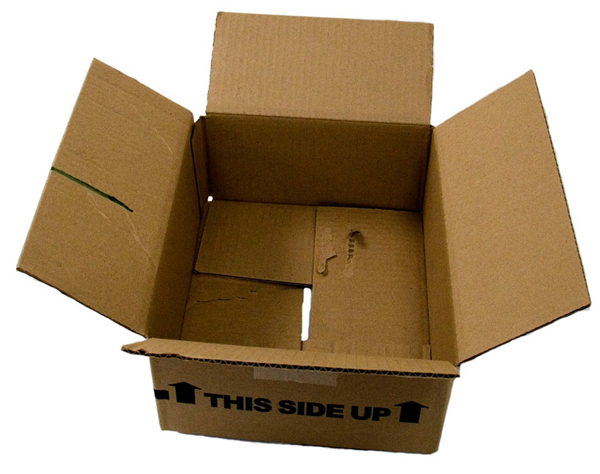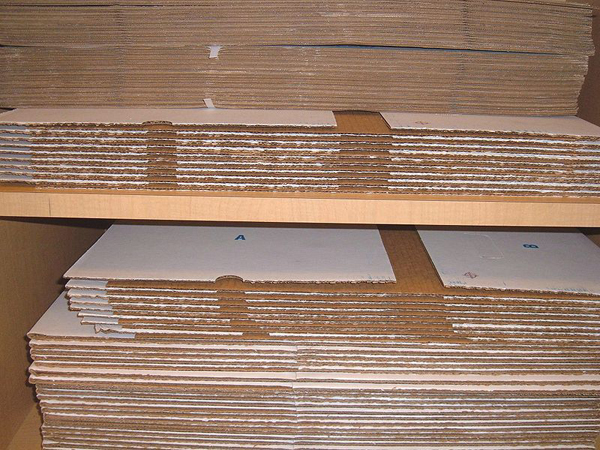Corrugated Cardboard
by Andrew Boyd
Today, the power of fluting. The University of Houston's College of Engineering presents this series about the machines that make our civilization run, and the people whose ingenuity created them.
It's a scene played out countless times every day. A truck pulls up to the curb, a uniformed driver jumps out, rings the doorbell, and leaves a box on the doorstep. Not just any box, but a box made of a remarkable product known as corrugated cardboard.

The light brown corrugated cardboard box is so common we take it for granted. But it's very different from, say, your paperboard cereal box. Unlike paperboard, which is essentially just a thick, rigid sheet of paper, corrugated cardboard has of a thin sheet of fluted paper placed between two rigid outer layers. And this design offers all sorts of advantages.
A useful, though imperfect, analogy is to imagine taking a sturdy sheet of paper, gluing tightly packed, parallel straws to one side, then gluing another sheet of paper on top. Corrugated cardboard's made with fluted paper, not straws, but the structural characteristics are much the same. If we situate the straws so they're pointing up and down, our newly constructed material can handle a lot of downward pressure — certainly more than a sheet of paper of the same weight. Of course, if the straws are on laid on their sides our material isn't nearly as strong. If you look carefully, you'll see that corrugated cardboard boxes are constructed so that the "straws" in the boxes' sides face up and down.
Patents for corrugated cardboard can be traced to 1850s England, where it was used to shape men's hats. Its use in the construction of boxes, however, dates to U.S. patents filed two decades later. Its basic design has changed very little since then, while at the same time it's become one of the most commonplace shipping materials around. And the reason? It's simply got so much going for it.
Being made of paper, corrugated cardboard is both light and inexpensive. It's relatively strong and provides a layer of cushioning. Boxes can be designed so they fold flat and as a result take little storage space. Corrugated cardboard accepts ink, making it easy to stamp with a company's logo. It's also one of the most recyclable substances known — easy to break down into pulp from which to make new paper products. And that doesn't count the most efficient form of recycling of all — re-use. Every time an empty box is pulled from the attic and repurposed, that's one less box that needs to be manufactured. Give an empty box to a child and it becomes the world's fastest race car or a spaceship travelling to the furthest reaches of the galaxy.
So the next time the delivery man arrives at the door with that special something, take just a moment to look at the box it arrived in. It's not very fancy, but it's great engineering.
I'm Andy Boyd at the University of Houston, where we're interested in the way inventive minds work.
(Theme music)
Notes and references:
Corrugated cardboard can be composed of many different layers. The description in the essay was limited to a single layer in order to simplify the presentation.
Corrugated Fiberboard. From the Wikipedia website: https://en.wikipedia.org/wiki/Corrugated_fiberboard. Accessed December 10, 2012.
Types of Corrugated Cardboard. From the Transport Information Service website: http://www.tis-gdv.de/tis_e/verpack/papier/wp_arten/wp_arten.htm. Accessed December 10, 2012.
All pictures are from state or city government websites.
This episode was first aired on December 13, 2012.

